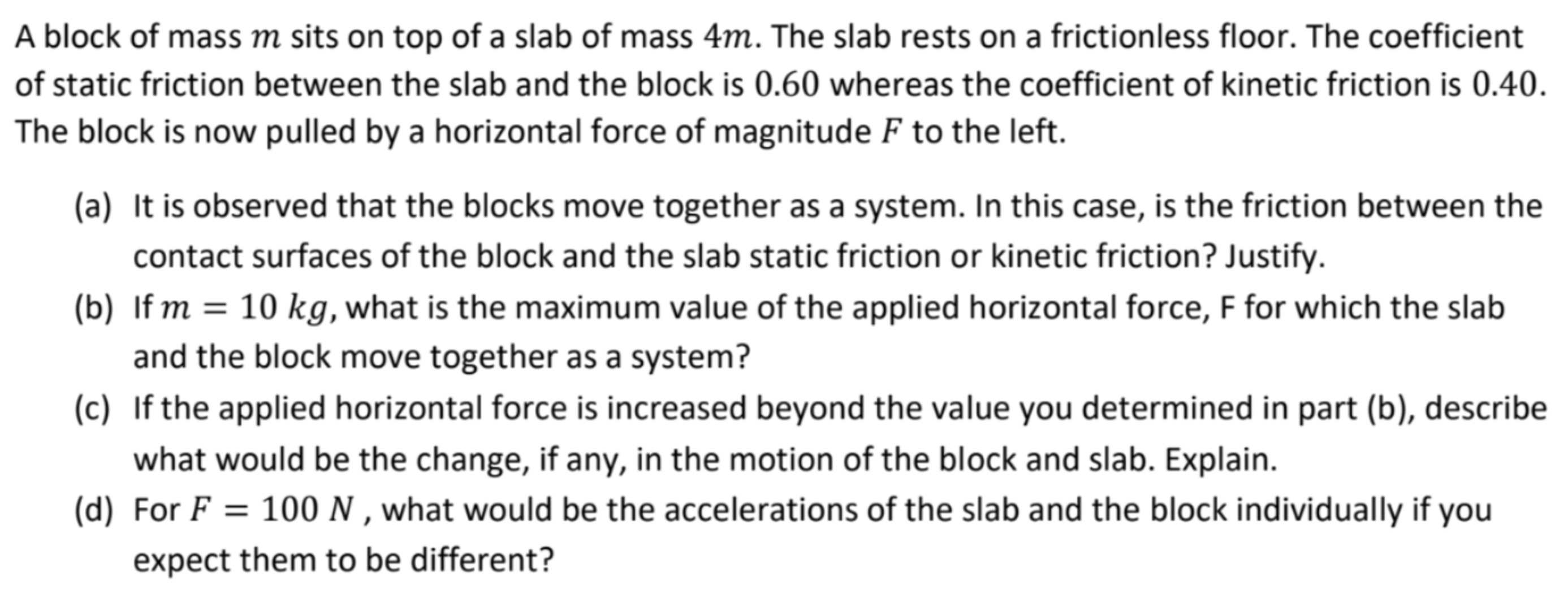A block of mass m sits on top of a slab of mass 4 m. The slab rests on a frictionless floor. The coefficient of static friction between the slab and the block is 0.60 whereas the coefficient of kinetic friction is 0.40 . The block is now pulled by a horizontal force of magnitude F to the left. (a) It is observed that the blocks move together as a system. In this case, is the friction between the contact surfaces of the block and the slab static friction or kinetic friction? Justify. (b) If m = 10 kg, what is the maximum value of the applied horizontal force, F for which the slab and the block move together as a system? (c) If the applied horizontal force is increased beyond the value you determined in part (b), describe what would be the change, if any, in the motion of the block and slab. Explain. (d) For F = 100 N, what would be the accelerations of the slab and the block individually if you expect them to be different?
